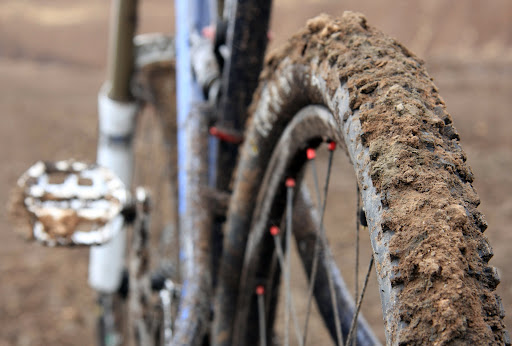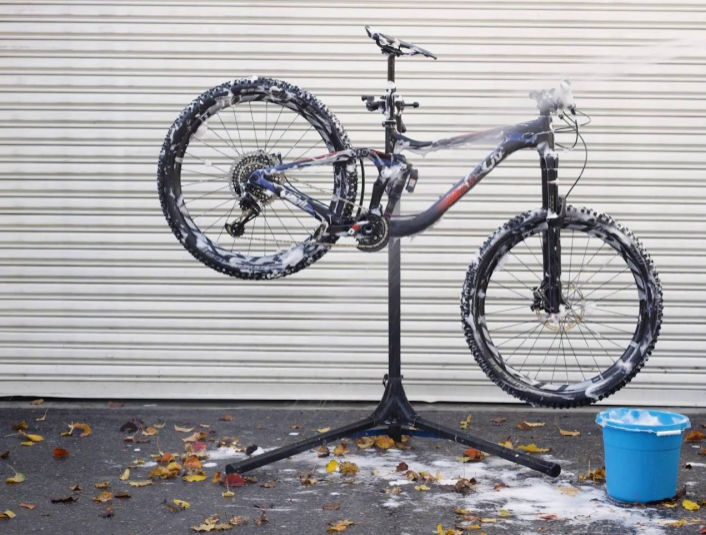How To Clean An E-Bike | KBO Bike
To ensure that your E-Bike lasts as long as possible, you may take a few simple measures to maintain and clean it yourself. Doing this will save you money and also prevent you from having to visit your bike shop frequently. Without regular cleaning, the powertrain will become mucky, parts will rust, and you will be far more prone to encounter jammed components, uncooperative gears, and squeaky brakes.
If dirt is allowed to accumulate, it will wear through moving parts irrespective of the type of your frames or the number of suspension parts on your bike. Cleaning your bike after a wet ride is vital, but it is also a good idea after a dry, dusty one.
It is an essential procedure that requires care; else, you risk severely damaging your electric bike. It is critical to keep your e-bike parts lubricated after you clean. If you want them to run well. Lubrication protects moving parts from frictional wear, keeps them from seizing up, and helps prevent rust and corrosion.
But be cautious. Excessive lubrication might result in poor performance and component damage (excess lubricant will attract dirt and other abrasive particles).

How often should I clean my e-bike?
People do not wash their commuter e-bikes as frequently as they should, perhaps because they do not use them as often as they use them in the city. That makes them look cleaner than mountain e-bikes that are engaged every weekend. However, because you are dealing with electrical connections and mechanics, you must clean it regularly to extend the battery life and keep the e-bike running appropriately.
There is no specific answer to the subject of how frequently you should clean an electric bike; it is determined primarily by how much you use it during the week, the sort of terrain you drive on, and the weather you are presently living in.
What do I need to clean my e-bike?
●Clean rags- You will need quite a number of them for tasks involving grease, oil, and wax, as well as routine cleaning and drying.
●Disc brake cleaner - To properly wipe your brake disc of grease and dust.
●Bike degreaser - Sticky parts like your bike chain can be cleaned with a bike-specific degreaser. (avoid kerosene or turpentine). Select an environmentally friendly solvent. All solvents must be well disposed of.
●Chain lube - Properly lubricating your chain helps extend the life of your drivetrain. Always apply bicycle-specific lube oil to a clean chain.
●Your e-bike user manual - Some bikes are designed with specific instructions of usage by the manufacturer. Having your user manual handy is a good idea.
●Poly-film - Used to cover your electrical components like the LCD digital display.
●A hose or a bucket of water: Water is often an effective aid when used correctly, but be cautious. Water, especially when flowing from a high-pressure hose, can cause harm to your bike's sensitive electrical component and bearing systems.
●Bike stand: This facilitates working on the bike at a comfortable height while you wash. It will also enable you to spin the pedals or remove the wheels, allowing you to clean all of the moving and difficult-to-reach parts.
●Soap or bike cleaner - You can improvise with a diluted dishwasher, or you buy a bike-specific washing liquid.
●Sponge and brushes - There are different sizes and shapes to reach hard-to-reach areas and remove filth that rinsing alone cannot. Old toothbrushes are ideal.

How to clean your E-bike
When you have everything you need to wash your e-bike, you should probably play your favorite playlist to set the mood and make it more fun.
Pre-wash set up
Space is essential while washing your e-bike to allow easy access to every part. You can use a bike stand to allow easy cleaning. You will be able to turn the wheels more easily without causing the e-bike to become unstable. Remove the display (if you have one). If you can't remove it because it's attached to the motor, cover it with poly-film to keep it dry. Also, take out the battery. Manuals typically state that you can leave it there since it is sufficiently shielded not to produce a short circuit. After all, electric bikes can and should withstand harsh weather conditions such as rain and snow. However, we recommend that you detach them to prevent minor issues.
Cleaning Your Bike
1) Rinse your bike with clean water
Depending on how dirty or muddy your e-bike is, you can carefully hose it down with a low-pressure water hose, or you can pour water on it. It will help to rinse out the excess dust. It will also soften the mud or tough specks of dirt on your e-bike frame and component corners.
2) Cleaning your bike frame
Gently wash the filth and grime away using a brush and a bucket of warm soapy water. Cleaning the handlebars, headset, top tube, seat post, seat stays, front fork, and brakes should be done from the top down. Keep soap away from the rotors and brake pads if you have disc brakes. To clean the rotors, you can use a bike-grade rotor cleaner or rubbing alcohol. Scrub the chainstays, chainrings, cranks, and cogs to finish. Rinse the parts in the same order you cleaned them using a pail of clean water and a brush. After that, thoroughly dry the bike with a bunch of clean, dry cloths.
Don't be alarmed if any water gets into the battery compartment; they have built-in internal drains. Plugs are protected from water, corrosion, and regular wear and tear by special material.
3) Cleaning your Chain.
Apply a degreaser and turn the cranks backward to get it on all of the links. Rinse with a mild constant flow of water from the hose after about five to ten minutes. If the chain is still dirty, apply little droplets of dish soap like a lubricant, hold the chain in the rough side of your sponge, and turn the cranks many times. Rinse.
We have an article on How to clean and lube the chains of your e-bike on our blog. You can read that to get more information on how to treat your e-bike chain.
4) Cleaning your drivetrains
Scrub the chainrings with a stiff-bristled brush, dipping the brush intermittently in one of the pre-filled buckets. We recommend using a bottle brush or toothbrush to clean the spaces around the teeth, pulleys, and rings. Then, rinse with a mild stream of water and repeat if there is any remaining filth. Then, grab the back wheel and sprinkle dish soap onto the cassette, scrub, and rinse. If necessary, repeat till it is clean.
5) Cleaning the brakes
Use a disc brake cleaner to clean them. Wipe it gently and avoid using improvised cleaners. They frequently end up limiting the effectiveness of the brake.
6) Cleaning the Tires
We recommend using softer, bigger brushes for tires and rims so you can get into every nook and cranny with minimal effort. Dunk your brush into the bucket you used for your frame. Starting at the valve, scrub around the wheel. Hit the spokes and hub, then flip the wheel to get to the opposite side. Repeat on the other wheel, then rinse.
Dry your Bike
Use one of your dry cloths to wipe down your bike, or you can leave it outside in the sun to air-dry if you are not in a hurry to complete the after-cleaning process. Patience is required because allowing traces of water or humidity may cause your e-bike to become dirty in a shorter period. Also, ensure that your battery compartment is all dried up before you install the battery back.
After Cleaning your e-bike
After cleaning, use a quality chain oil to keep the chain lubricated and avoid leaving it dry. In the winter, use wet lubrication, and in the summer, use a dry lube. You can also use mild spray oil to lubricate the cables. Ensure to keep your tires readily inflated at all times. When lubricating the drive chain, make sure no lubricant goes on the disc brake.
After washing, perform the following short function check:
- Is the battery well inserted?
- Is the drive operational?
- Is the system responsive when buttons are pressed?
What not do when cleaning your bike.
Do not turn it upside down
There is a belief that turning your e-bike upside down will help you to drain water effectively. That is not necessary as provision has been made to ensure that your bike is properly drained. There are small holes in all the compartments to drain the water off. Turning your bike upside down will only scratch your handlebars or damage your display screen.
Do not use a pressure hose
There is no need to try or test your motor seals by blasting away at your e-bike with a high-pressure water hose. The possibility of damaging the electrical component does not need to be tested. The blast of the water pressure could also move specks of dirt to sensitive areas of your e-bike.
Do not lubricate a wet chain
Ensure your chain is adequately dry before you lubricate.
All this been said, if you follow the above routine, you are well on a path to having a lasting relationship with your e-bike by keeping it clean and functional.

















































